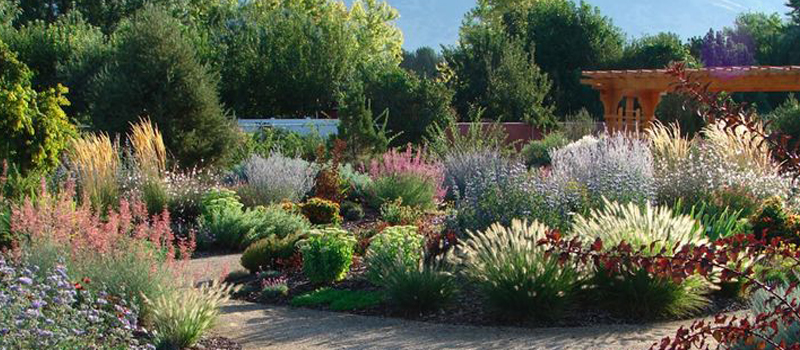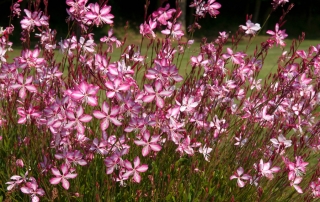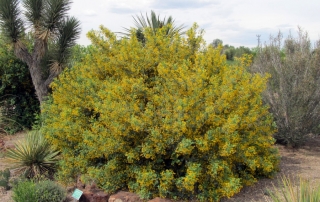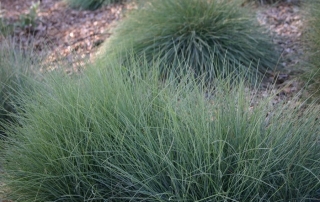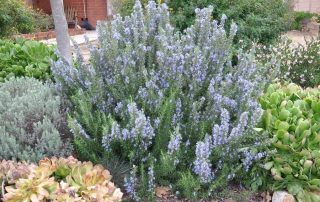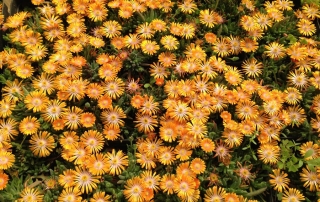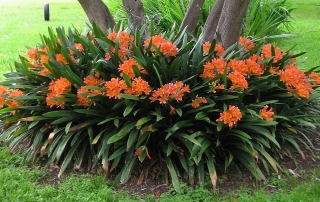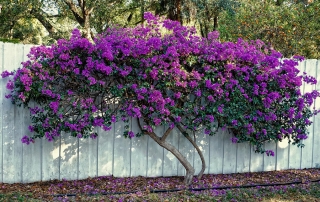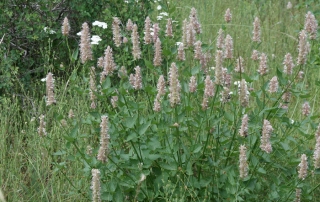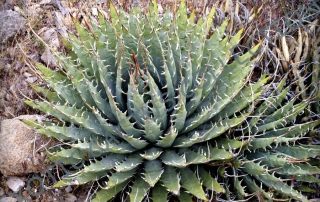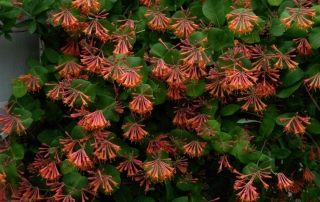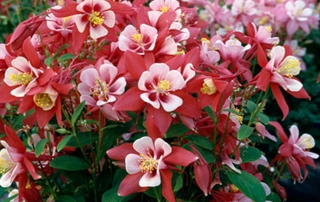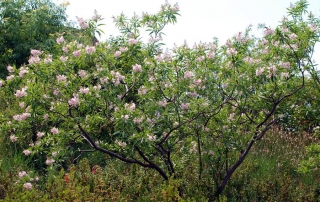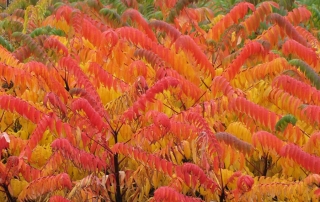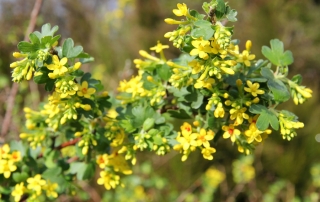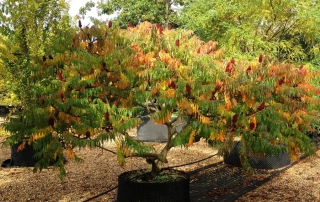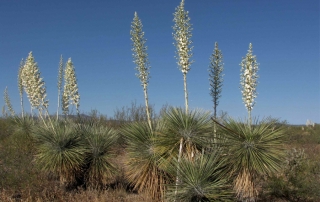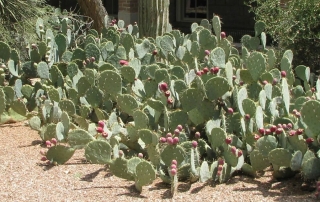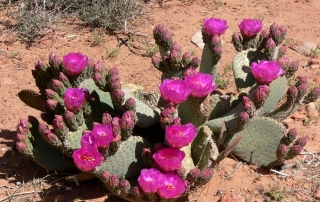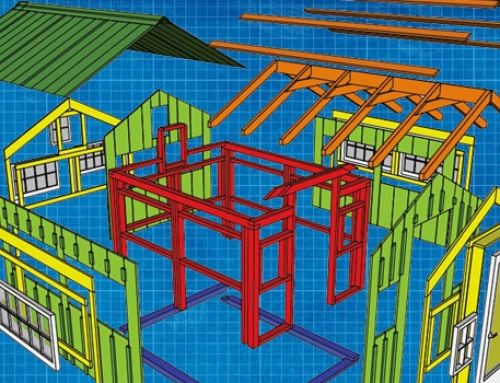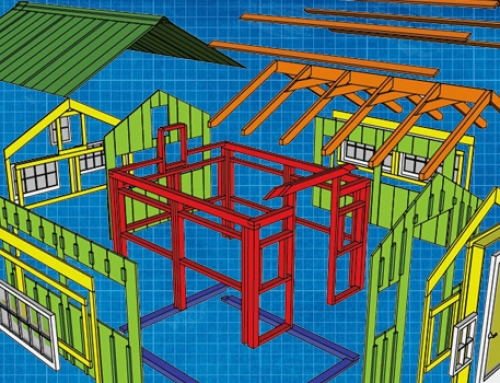The Time for Happy-Go-Lucky Kentucky Bluegrass is Gone
Almost 95% of the land in the West is in some sort of drought, the worst levels in the U.S. in the last 90 years. Considering that the West produces more fruit crops it is crucial to protect and conserve water there.
Add to the extreme water shortage in the reservoirs and lakes. With levels being down as much as 75% across the board there is a dire need to readjust how we “decorate” our humble abodes.
One solution for gardeners is to adopt xeriscaping,, a style of landscaping designed to reduce water use. “Xeric” or dry, doesn’t always mean cacti and succulents. It can mean using native grasses and other plants adapted to dryer climes, or hardscaping features such as boulders, pavers, and types of gravel instead of thirsty lawns.
Here are some of our favorite picks for growing a stunning landscape with fewer water requirements:
Groundcovers and Grasses
With a little planning and strategic use of grasses, border plants, and groundcovers, you can maintain a breezy elegance in your garden without running a sprinkler for hours at a time.
- ‘Siskiyou Pink’ gaura (Gaura lindheimer) is a native of southern Oregon that has feathery, red-tinged leaves and delicate salmon-pink flowers that bloom from spring to fall. Once established, it forms a nice roundish shape up to 3 feet tall and wide.
- Utah Holly or Fremont Mahonia (Mahonia fremontii) a robust Utah native shrub produces spiny leaves that emerge burgundy, turn green, and then blue-green with maturity. Bright yellow flowers appear from spring to summer, turning to purple fruit that was used as a dye by Native Americans. The fruit is also edible, but extremely sour. Its form is uneven but can be kept uniform with careful maintenance. It is adapted to poor soils and hot, dry conditions. It does not need additional irrigation once established.
- Red Fescue (Festuca Rubra) is a cool-season grass forming tufts of arching, narrow, dark green blades. One of the most shade tolerant of lawn grasses. it tolerates many habitats, climates and is not fussy about soils. It makes a lovely lush green grass for shady spots where most turfgrasses will not grow. It is beneficial for erosion and is a good lawn substitute.
- Huntington Carpet creeping rosemary (Rosmarinus officinalis) Perfect for a Mediterranean garden, but great in any water-wise country garden.
- Fire Spinner ice plant (Delosperma) is a daisy-like flower that come in tons of colors.
Flowers and Small Bushes
Yes, you can achieve a seemingly lush “tropical” oasis in the middle of a high desert climate. And with most of the western United States being in such a clime we all can get behind such a landscape oasis.
- ‘Belgian Hybrid Orange’ clivia (Clivia miniata) has strappy dark green foliage and bodacious clusters of vermillion blossoms that magically transform in the spot they are planted.
- ‘Sharon Wesley’ bougainvillea (Bougainvillea) a gorgeous climbing plant perfect for covering walls, arches, trellises, and fences. It is a breathtaking shade of fuchsia, but bougainvillea comes in white, pink, orange, and purple as well.
- Nettleleaf Giant Hyssop (Agastache urticifolia) is a tall, herbaceous, strongly aromatic, perennial boasting dense flowering spikes packed with tiny, white to rose or violet flowers with protruding stamens.
- Utah Agave (Agave Utahensis) small evergreen perennial succulent forming rosettes of think, narrow, upward-curving, spiny-edged, blue-gray leaves with a long dark spine at their tips. Producing clusters of bright yellow flowers.
- Orange Honeysuckle (Lonicera ciliosa) is a large, twining deciduous climber with masses of orange tubular flowers, that flare to 5 lobes at the end. Borne in dense terminal clusters just above a large round leaf,, they are produced in succession from late spring to mid-summer.
- Rocky Mountain Columbine (Aquilegia caerulea) these two-toned flowers with star-like, creamy white petals and violet-blue sepals and spurs. Bushy yellow stamens add a third color.
Nonthirsty Shrubs and Small Trees
Add some visually interesting structures to your garden by including woody plants. These trees and shrubs don’t require much water once they’re established, but you may want to wait until late fall before planting to give them time to settle in over the winter and spring.
- Desert Willow (Chilopsis linearis) may not be a true willow, but with its show, speckled, rhododendron-like flowers, this water-wise shrub is a hit with hummingbirds.
- Smooth Sumac (Rhus glabra) is an open, spreading deciduous shrub with nice ornamental features. Its foliage of shiny, deeply dissected, fern-like, deep green leaves turns to shades of brilliant reds and oranges in the fall.
- Clove Currant (Ribes aureum) provides great ornamental value over a long season of interest. This small tree of trumpet-shaped golden yellow flowers followed by clusters of black currants.
- Staghorn Sumac (Rhus typhina) is a large suckering shrub or small tree of foliage of large, pinnate, bright-green leaves. Great to have in any garden.
Cacti and Succulents
Any type of cactus, yucca, or aloe is a natural choice for a desert garden, and no, they’re not all covered with forbidding spines. Here are our choices for that garden.
- Soaptree Yucca (Yucca elata) is a very ornamental, slow-growing evergreen treelike yucca boasting a dense rosette of narrow, linear, blue-green leaves topped by a striking flowering stalk of large clusters of white flowers.
- Engelmann Prickly Pear (Opuntia engelmannii) is a bushy succulent with light green or bluish green egg-shaped, fleshy pads. It forms sizeable clusters and grows either upright or spreading. The spines are quite short, masses of stunning yellow to orange flowers appear that then are followed by juicy, purple-red fruits.
- Beavertail Cactus (Opuntia basilaris) is a bushy succulent shrub with gray-blue wide and flat fleshy pads resembling beaver tails. Topped with spines that are mounted with pink flowers at the end of the pads
When we best take care of our stewardships of land and what’s on it. Be responsible for the use of the precious water in such a climate.

